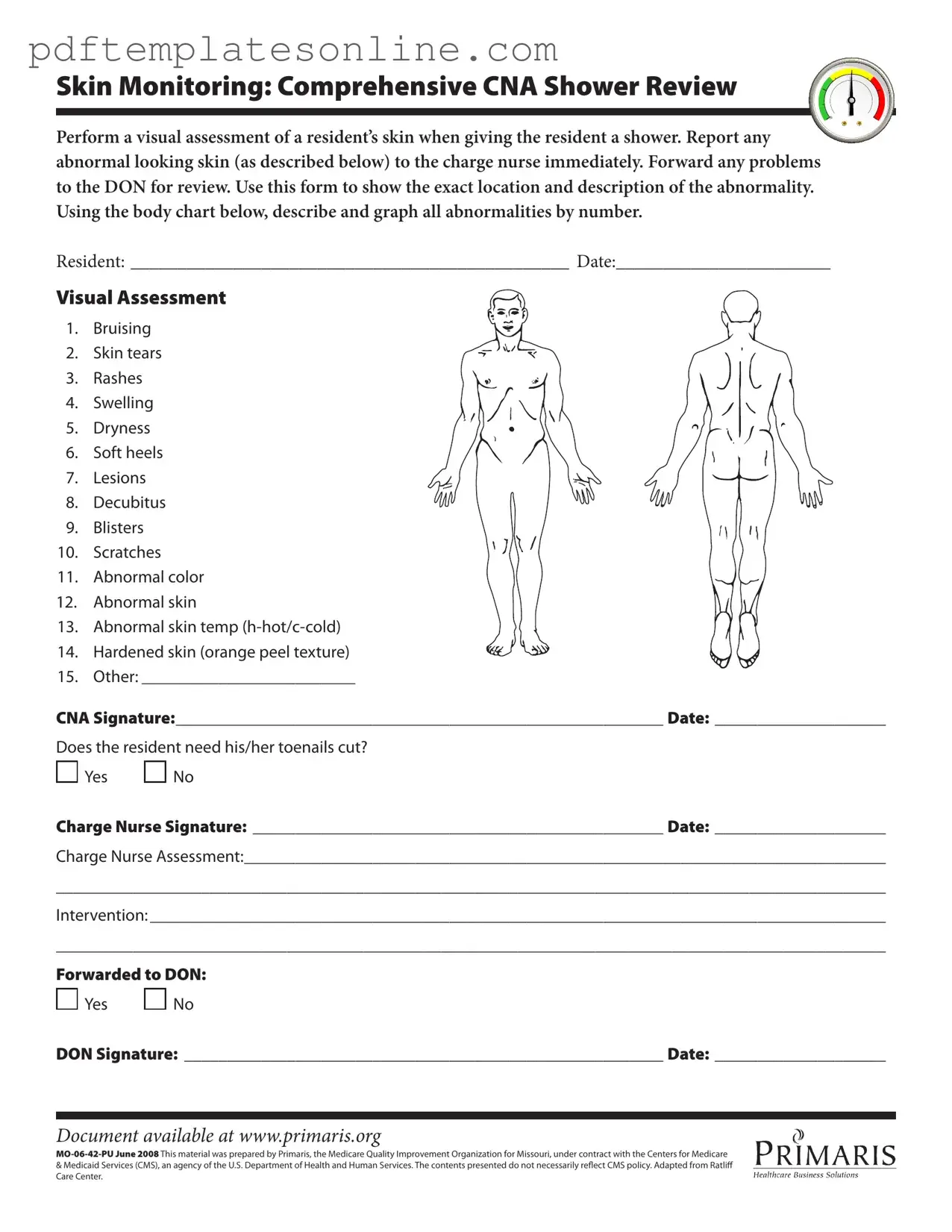Filling out the CNA Shower Sheets form is a critical task that directly impacts the care of residents. However, there are common mistakes that individuals often make, which can lead to miscommunication and inadequate care. One significant error is failing to conduct a thorough visual assessment. It’s essential to carefully examine the resident’s skin for any abnormalities before documenting them. Skipping this step can result in overlooking serious conditions that require immediate attention.
Another frequent mistake involves incomplete or inaccurate descriptions of skin abnormalities. When noting issues like bruising or rashes, it is vital to provide specific details about their location and appearance. For instance, simply stating "there is a rash" does not convey the necessary information. Instead, one should describe the rash's size, color, and any associated symptoms. This level of detail aids healthcare providers in making informed decisions about the resident's care.
People also tend to neglect the importance of using the body chart provided in the form. This chart serves as a visual aid to pinpoint the exact location of skin issues. Failing to utilize it may lead to confusion or misinterpretation of where the problems are located. Properly marking the chart not only enhances clarity but also ensures that the charge nurse and other healthcare professionals understand the situation accurately.
Another common oversight is not reporting abnormalities promptly to the charge nurse. Immediate communication is crucial when it comes to skin issues. Delaying this step can exacerbate the resident's condition and hinder timely interventions. It’s important to remember that timely reporting can significantly improve outcomes for residents with skin concerns.
In addition, some CNAs may forget to sign and date the form after completing their assessments. This signature is not just a formality; it serves as a record of accountability and ensures that there is a clear trail of who conducted the assessment. Omitting this step can create gaps in documentation, which may complicate future care or audits.
Lastly, a mistake that can have serious implications is failing to follow through on interventions or not forwarding the information to the Director of Nursing (DON) when necessary. If a resident requires further evaluation or treatment, it is essential to document that and ensure the DON is aware. Neglecting to do so can leave residents without the appropriate care they need, potentially leading to worsened health outcomes.
